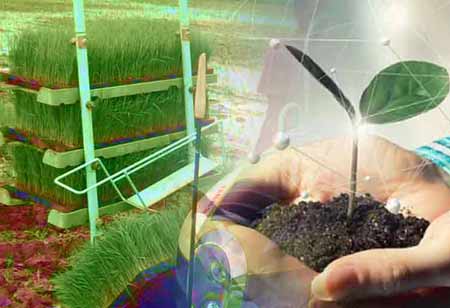Thank you for Subscribing to Agri Business Review Weekly Brief
Different Types of Aquaculture
Generally, fish cultivation is the elementary form of aquaculture.

By
Agri Business Review | Monday, November 14, 2022
Stay ahead of the industry with exclusive feature stories on the top companies, expert insights and the latest news delivered straight to your inbox. Subscribe today.
There are four types of aquaculture generally practised, such as mariculture, fish farming, and Algaculture, and the end piece is integrated fish farming.
FREMONT, CA: Generally, fish cultivation is the elementary form of aquaculture. Fish farming means cultivating fish in man-made ponds, lakes, tanks, and other commercial enclosures. The most commonly farmed fish like catfish, tilapia, salmon, carp, cod, and trout.
These differ from country to country and the demand of the local market. With the rise in overfishing and the requirement for wild fisheries, the fish-farming industry has evolved to meet the huge demand for fish products. There are four types of aquaculture generally practised, such as mariculture, fish farming, and algaculture, and the end piece is integrated fish farming. Among these, the fourth is the recent and most scientific methods applied.
1. Mariculture:It is also the branches of aquaculture that nurture marine organisms commercially. It may be in the open ocean, an enclosed ocean, a lake or tanks, or ponds full of seawater directly or indirectly. But comprising seawater for the whole time in this system is a requirement.
Therefore, mariculture is a particularized extension of aquaculture undertaken in marine environments. The organisms bred here are several species, such as flounder, whiting, prawn, oysters, kelp, seaweed, and other shellfish.
These sea plants and fish species are commercially used in fabrication industries like cosmetics and jewellery. Seaweed is used to make facial creams. Pearls are picked from molluscs changing into fashionable items.
2. Fish farming:Fish farming, a famous concept, is the most general type of aquaculture. It incorporates the selective breeding of fish in freshwater or seawater to produce fish commercially. It is greatly used as it enables the production of an economical source of protein for the poor and coastal countries.
It is simpler than other types of farming as fish are not care-intensive, requiring food, proper water conditions, and temperatures.
The process is also land-saving as the size of ponds is required to grow some fish species. Tilapia/catfish farming needs a smaller space than growing the same protein from cattle or other livestock.
3. Algaculture:It is another type of aquaculture comprising the farming of species of algae. Its practice is comparatively low than other forms of aquaculture.
The major cultured divisions fall into the microalgae family, also known as phytoplankton or planktonic algae.
Macroalgae, usually recognized as seaweed, also have several commercial and industrial uses. But due to their size and the essentials of the environment they require to grow, they do not lend themselves as easily to cultivation.
The applications of commercial and industrial algae cultivation include food ingredients like omega-3 fatty acids or natural food pigments and dyes, pharmaceuticals, food, fertilizer, bio-plastics, and algal fuel. It can also be utilized as a means of pollution control.
Still, for economic possibility, they have to be mature and harvested in great numbers commercially. Algae are found in many applications in today’s markets also.
4. Integrated Aquaculture:Integrated aquaculture, commonly called integrated multitrophic aquaculture, is a modern system of aquaculture where diverse trophic levels are mixed into the system to offer different nutritional needs for each other. It is efficient as it tries to simulate the ecological system in the natural habitat. In many situations, it is also known as mixed farming.
It uses these intertropical transfers of resources to ensure maximum resource employment by using the waste of major organisms as food sources for the smaller ones. The practice guarantees the nutrients are recycled. This process is less wasteful and produces more products.





